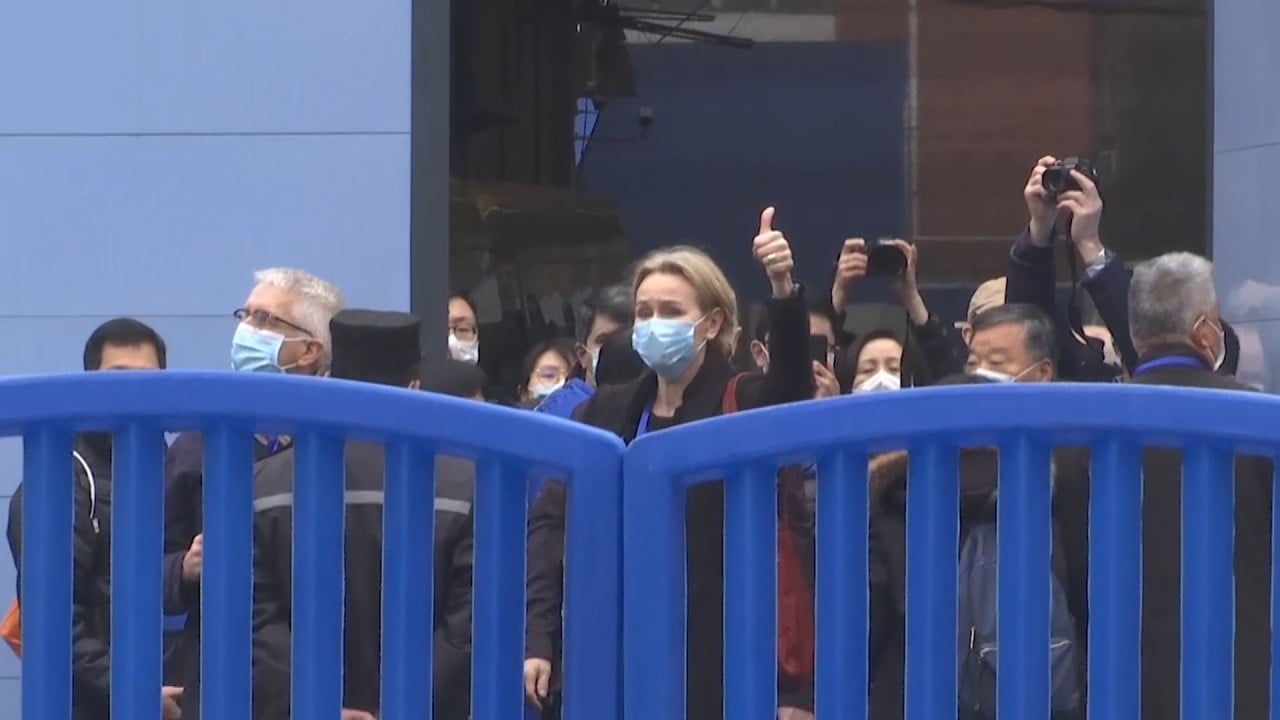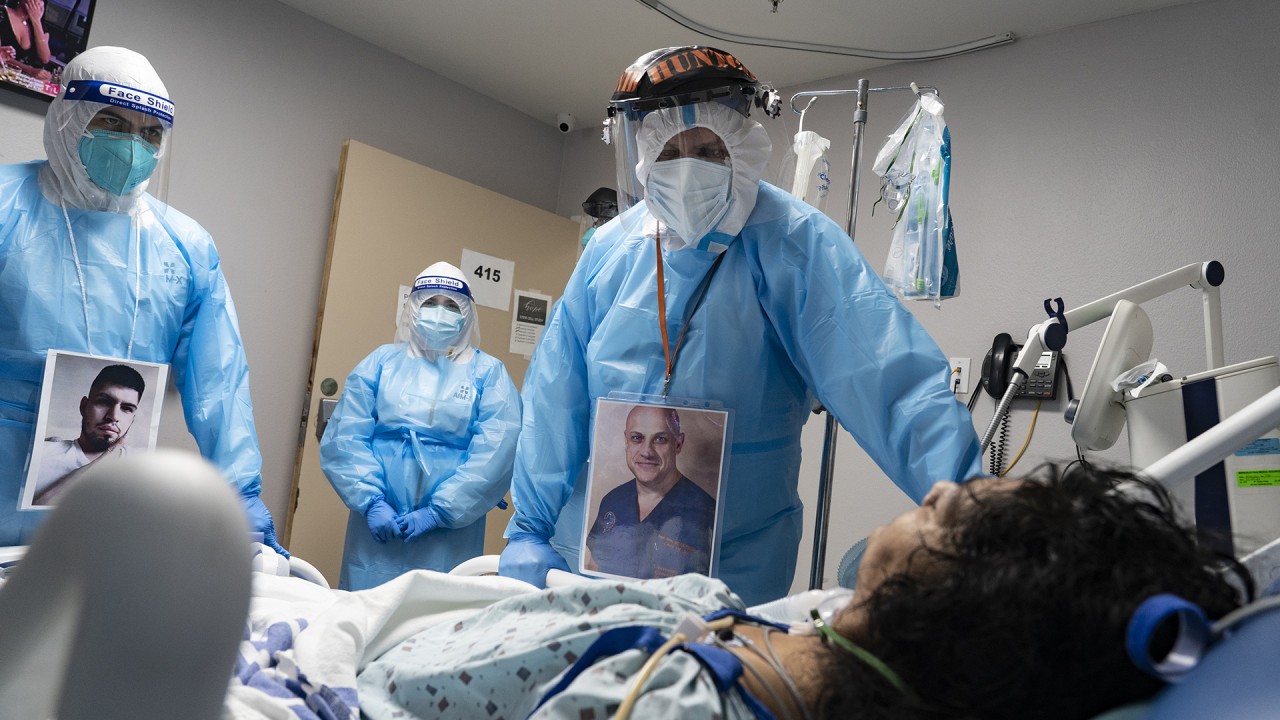
‘Interesting day’ for WHO Covid-19 team at China’s Wuhan virology lab
- Research institute has been at the centre of conspiracy theories, rejected by most scientists, that new coronavirus emerged there
- Expert moves to dampen expectations of early findings and asks for patience
The experts spent about 3 1/2 hours at the heavily-guarded Wuhan Institute of Virology, which has been at the centre of some conspiracy theories that claim a laboratory leak caused the city’s first coronavirus outbreak at the end of 2019.

01:51
WHO team probing coronavirus origins in China visits Wuhan wet market at epicentre of virus outbreak
Most scientists reject the hypothesis, but some speculate that a virus captured from the wild could have figured in lab experiments to test the risks of a human spillover and then escaped via an infected staff member.
“Very interesting. Many questions,” Thea Fischer, a Danish member of the team, called from her car as it sped away, in response to a question about whether the team had found anything.

01:20
WHO team sees data ‘no one has seen before’ during Covid-19 origin investigation in Wuhan, China
Some scientists have called for China to release details of all coronavirus samples studied at the lab, to see which most closely resembles Sars-CoV-2, the virus that causes the respiratory disease.
“I am looking forward to a very productive day, meeting the key people here and asking all the important questions that need to be asked,” team member Peter Daszak, who is the president of the EcoHealth Alliance, said from his car as it arrived earlier.
Another expert said there would be no quick answers to the origins of the coronavirus. Hung Nguyen-Viet, who is visiting various virus-linked sites in Wuhan with the team, said starting the investigation more than one year after the pandemic began was not ideal, but added the mission was progressing well.
Stumble start on way to China for WHO coronavirus origins team
The politically sensitive trip – which Beijing had delayed throughout the first year of the pandemic – aims to explore how the virus first jumped from animals to humans before killing millions worldwide after it was first reported in Wuhan in late 2019.
But Nguyen-Viet said in a Zoom video interview that it was a “difficult question and a difficult study”, and the world should not expect quick answers. “It is very unlikely that (in) such a short mission, (we) would have a very advanced understanding or definite answers to the question,” he said.
“So I think that we need to be patient, we are in a process, and we need time and effort to understand it.”
Nguyen-Viet, co-leader of the Animal and Human Health Programme at Nairobi’s International Livestock Research Institute, also said it would have been preferable for the team to have visited Wuhan earlier. “Obviously it is ideal to do the study at that time or right after.”

04:46
Seeking the invisible: hunt for origins of deadly Covid-19 coronavirus will take scientists to Wuhan
The WHO, which has sought to manage expectations for the mission, has said its members would be limited to visits organised by their Chinese hosts and have no contact with community members, because of health restrictions.
Since arriving in Wuhan, the group of experts has been to a number of key sites – including hospitals that treated early Covid-19 patients and the now-infamous Huanan seafood market where the first cluster of infections emerged.
“We learned about the background, different cases at the market, so it helped me to construct the story and understand better the context of that market,” Nguyen-Viet said.
Nguyen-Viet, an animal health specialist, said the team had already met Shi Zhengli, a key figure at the institute dubbed “China’s bat woman” for her extensive research into bat coronaviruses.
Chinese virologist rules out Covid-19 virus in fresh tests on old cave samples
However, he said the team would not be visiting the remote caves in southwestern Yunnan province, where the closest relative to the virus – called RaTG13 – was found in bat droppings in 2013, according to a report from Shi.
Nguyen-Viet said bats – which many scientists think were the original source of the new coronavirus –had been a key topic of discussions during the WHO trip. He admitted the team was feeling the global political pressure and tried to downplay expectations of any quick results.
“It’s an ongoing process,” he said. “And we focus on our work and we will see what comes out from this mission.”
While the novel coronavirus that sparked the pandemic was first identified in Wuhan, Beijing has sought to cast doubt on the notion that it originated in China, pointing to imported frozen food as a conduit.
The team will spend two weeks in field work after having completed two weeks in hotel quarantine after arrival in Wuhan.


.png?itok=arIb17P0)